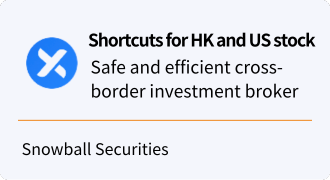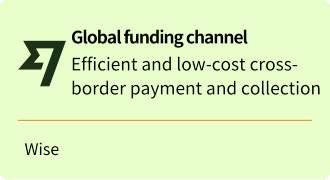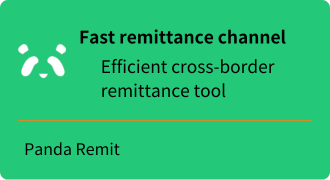QQQ 25-Year Returns: DCA vs Lump-Sum Investing
[DISCLAIMER] This article is for educational and informational purposes only and does not constitute investment advice. Readers should consult with qualified financial professionals before making any investment decisions.As a senior quantitative trading practitioner, I often receive questions from readers, “Which is better, lump sum investment or fixed investment?” Today, let's pass QQQ 25 years of real data to reveal the truth behind different investment strategies, while providing a convenient way for domestic investors to participate.
I. Comparison of four investment strategies
Based on actual data from 1999 to 2024, we compare the performance of four investment strategies:
- Lump sum investment ($1 million)
- Daily Fixed Investment ($153)
- Weekly Fixed Investment ($769)
- Monthly Fixed Investment ($3236)
The fixed investment amount is $1 million, which is evenly distributed on a daily, weekly, and monthly basis, so that all investments are completed by December 31, 2024. The total investment amount of the four investment strategies is guaranteed to be the same.
1.1. Comparison of overall returns
Lump sum investment:
- Final Market Capitalization: $14,088,972
- Total return: 1308.90%
- Annualized rate of return: 10.81%
Daily Fixed Investment:
- Final Market Capitalization: $10,491,127
- Total return: 949.11%
- Annualized Return: 9.55%
Weekly Fixed Investment:
- Final Market Capitalization: $9,552,590
- Total return: 855.26%
- Annualized Return: 9.15%
Monthly Fixed Investment:
- Final Market Capitalization: $9,091,807
- Total return: 809.18%
- Annualized rate of return: 8.94%
1.2. Risk Control Comparison
Performance in three major market corrections:
2000 tech bubble:
- Lump-sum investment retracement: -82.96%
- Average retracement of fixed investment strategy: -55.29%
2008 Financial Crisis:
- One-time investment retracement: -49.29%
- Average retracement of fixed investment strategies: -46.81%
2020 Epidemic Shock:
- One-time investment retracement: -28.56%
- Average retracement of fixed investment strategy: -28.56%
Ⅱ. fixed investment strategy in-depth analysis
2.1. Why can fixed investment fight retraction?
The core advantage of fixed investment is:
- The law of cost averaging
- Automatically add positions on the low side
- Avoiding the risk of timing
Take the 2008 financial crisis as an example, when the market plummeted:
- Lump sum investors can only take losses passively
- Fixed investors can buy more shares at lower prices
- Subsequent rebound for greater gains
2.2. Advantages and disadvantages of the three types of fixed investments
Daily fixed investment:
- Advantage: most thorough cost averaging
- Disadvantage: Higher operating costs
- Ideal for: automated investment systems
Weekly Fixed Investment:
- Advantage: best balance of operation and return
- Weakness: Slightly lower cost averaging effect
- Suitable for: Most individual investors
Monthly Fixed Investment:
- Advantage: easiest to operate
- Weakness: May miss important buying points
- Suitable for: investors with high cash flow management requirements
III. Time Dimension of Fixed Investment
3.1. The importance of long-term investment
The most critical success factor of fixed investment is time. From QQQ's 25-year data:
- 5-year period: over 65% probability of beating the market
- 10-year period: over 85% probability of beating the market
- 15-year: over 95% probability of beating the market.
3.2. Time-created compounding effect
- The first 5 years: mainly accumulating shares
- 5-10 years: compounding effect begins to manifest itself.
- More than 10 years: the compounding effect is significantly magnified
Ⅳ. Participation of Domestic Investors
Alipay QDII Nasdaq 100 ETF Feeder Fund provides a convenient participation channel for domestic investors:
4.1. Main Advantages
- Extremely low threshold: starting from RMB1
- Convenient operation: buy and sell at any time
- Safe funds: no need for offshore account
- Fee transparency: Fees are calculated as a percentage
- Automatic customization: Automatically buy in fixed investments based on rules
4.2. Special Notes
- Exchange rate factor: RMB exchange rate fluctuation should be taken into account
- Time difference: NAV calculation is delayed by one day.
- Fund Fee: Includes management fee and custodian fee
- Tracking Error: Small deviation from QQQ is possible.
4.3. Fixed Investment Recommendations
- Stick to the long term: at least 5-10 years investment period.
- Reasonable amount: It is recommended to use 20-30% of your monthly income minus your expenses.
- Continuous investment: maintain investment discipline
V. Practical Suggestions
5.1. Investment Amount Setting
- Ensure that you have 12-18 months' worth of living expenses in reserve (this money should only be used to preserve value in a low-risk, readily accessible way).
- Set the amount in proportion to your monthly income
- Keep cash for market fluctuations
5.2. Choice of investment cycle
- Wage earners: choose monthly investment
- Freelancers: weekly investment is more suitable
- Institutional investors: daily investment can be considered
5.3. Risk management
- Reasonable diversification
- Maintain sufficient liquidity
- Wait patiently for time to pay off
VI. Data Research Methodology
In conducting this investment strategy study, we have adopted a rigorous data analysis methodology to ensure the reliability and usefulness of our conclusions.
6.1 Data base
We selected the complete trading data of QQQ for the 25-year period from March 1999 to December 31, 2024, including:
- Daily closing price
- Trading volume
- Dividends
This time span covers several complete market cycles, from the internet bubble to the financial crisis to the new crown epidemic, providing us with sufficient sample data.
6.2. Yield Calculation Methodology
To ensure the accuracy of our analysis, we have adopted a multi-level calculation methodology:
- Base return: total return is calculated by compounding interest
- Annualized return: Geometric mean method is used to more accurately reflect the long-term investment effect.
- Automatic reinvestment of dividends
6.3 Risk assessment system
In assessing the risk of different strategies, we focus on three dimensions:
- Maximum retracement: Calculates the maximum loss that may be encountered during the investment process
- Volatility: Measures the stability of the portfolio
- Risk-adjusted return: assesses the return performance per unit of risk through the Sharpe ratio.
This analytical framework helped us arrive at an important finding: while lump sum investments lead in terms of total return, fixed investment strategies show a clear advantage in terms of risk control, especially during periods of high market volatility.
6.4 Practical implications
The practical implications of understanding these calculations are:
- Help investors evaluate their investment performance more rationally
- Provide a quantitative basis for choosing an appropriate investment strategy
- Maintain rational judgment during periods of market volatility
These findings not only support our previous investment recommendations, but also provide a quantifiable decision-making framework for individual investors. Regardless of which investment strategy you choose, understanding the data behind it will help you walk a more robust investment path.
Ⅶ. Conclusion
25 years of data tells us that the key to success in fixed investment is “time” and “discipline”. Although a lump sum investment may bring higher returns, fixed investment can effectively reduce risk by spreading out the buying time, which is especially suitable for ordinary investors. Through QDII funds, domestic investors can also conveniently participate in the growth of U.S. technology giants.
From the above comparison, we can see that a lump sum investment is more profitable in an uptrend market, while a fixed investment strategy can effectively reduce the timing pressure and psychological burden. So, is there a way to combine the advantages of both strategies while reducing the risks of each? In the next article, we will look at the 'Mixed Strategy 4-4-2' to see how a proper allocation of capital can lead to more stable returns in a volatile market.
Remember: investing is a marathon, not a sprint. Choose a fixed investment method that suits you, stay patient, and let time be your greatest ally.
What other questions do you have about fixed investment strategies? Feel free to share your thoughts and experiences in the comments section. In the next article, we will discuss in detail how to adjust your fixed investment strategy according to the market environment, so stay tuned.






